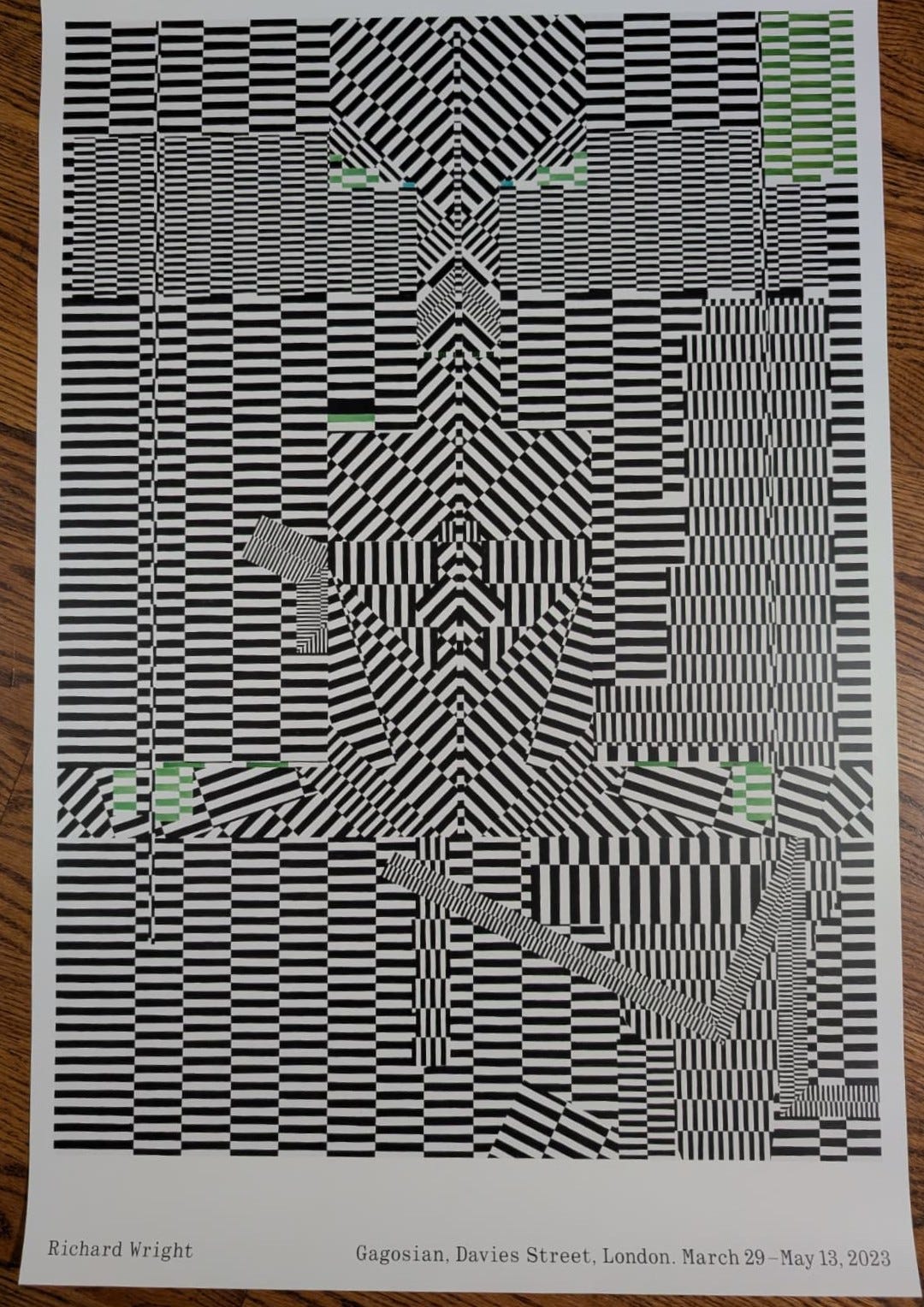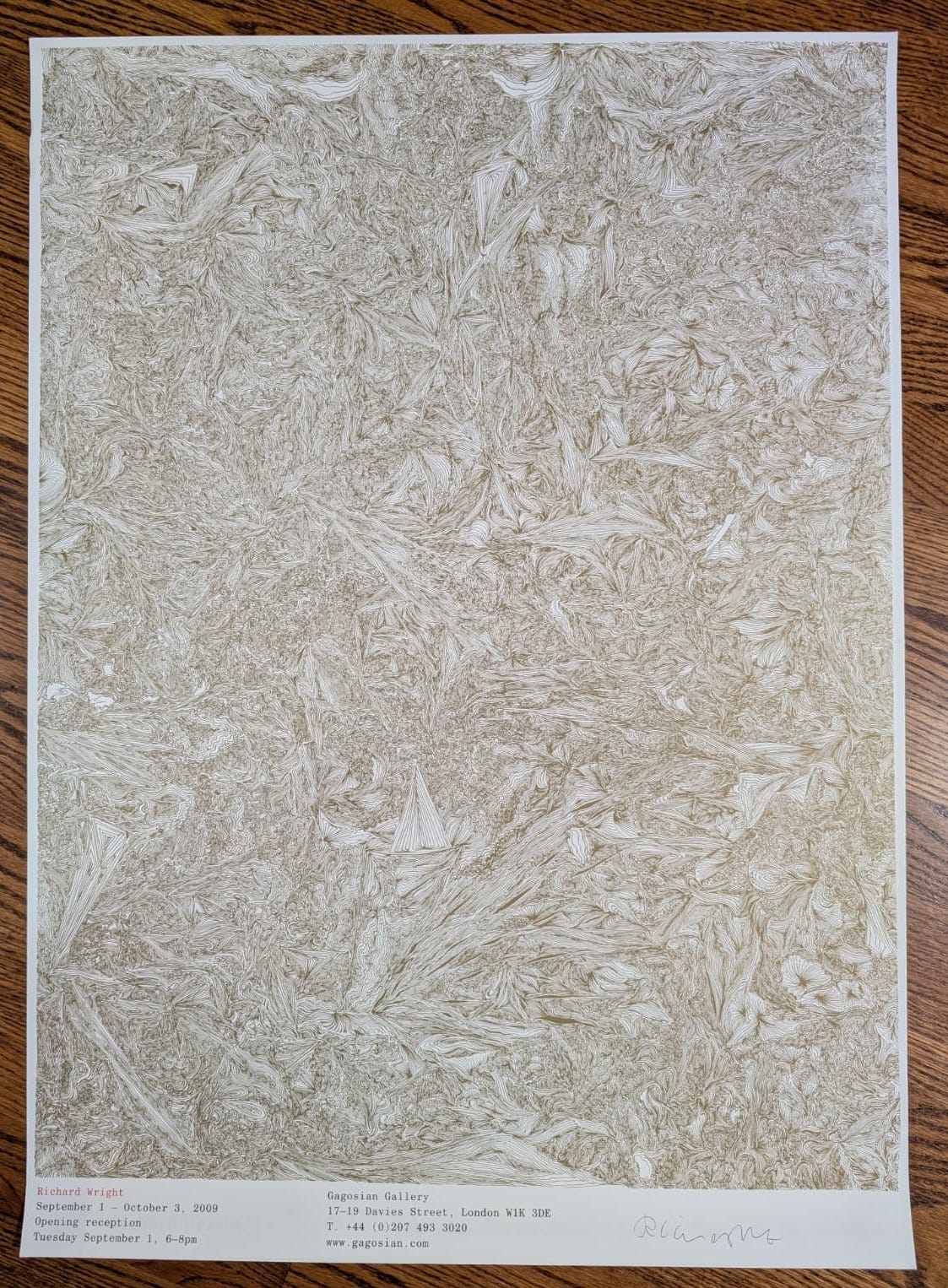Richard Wright’s Wall-Based Art
His practice shares many Arte Agora principles
Arte Agora lines city walls, abandoned buildings, street signs, light boxes—really anywhere in the urban landscape where blank space beckons. This art infuses cities with the sense of an open-air gallery, transforming empty surfaces into a communal canvas.
Richard Wright, the Turner-prize winning painter known for meticulously hand‑painting geometric patterns directly onto architectural surfaces, is also an Arte Agora artist. He designs posters that are pasted both inside and outside of galleries, blurring the line between art and life. By intentionally placing his work on everyday surfaces, Wright dismantles the divide between the curated exhibition and the lived environment, and joins the ranks of wheat paste artists around the world.
His street poster practice embodies the Arte Agora definition of art that is “placed in the public way,” where human exchange, constant renewal, and shared experience come to the fore. With these posters Wright creates mini spontaneous exhibitions pasted onto urban surfaces. The gallery becomes permeable; art reaches outside the white cube and meets the city, outside.
In the taxonomy of Arte Agora, we talk about the idea of “spots,” specific public spaces where artists exhibit their work. Even Wright’s primary work, his site‑specific wall paintings are attuned to this notion. A space painted by Wright isn’t just a display, it’s a moment of dialogue between the built environment and artistic gesture. The exact shape of the wall, its position in space, the surrounding architectural features, all have a role in forming the artwork.
Arte Agora thrives on exchange, impermanence, and shared visibility. Wright’s wall paintings, often erased or painted over after the exhibition, share that transience, as surely his outdoor posters do as well. The art is defined not by permanence but by the moment of encounter, by the shared recognition between the wall, the artist, and the public.



